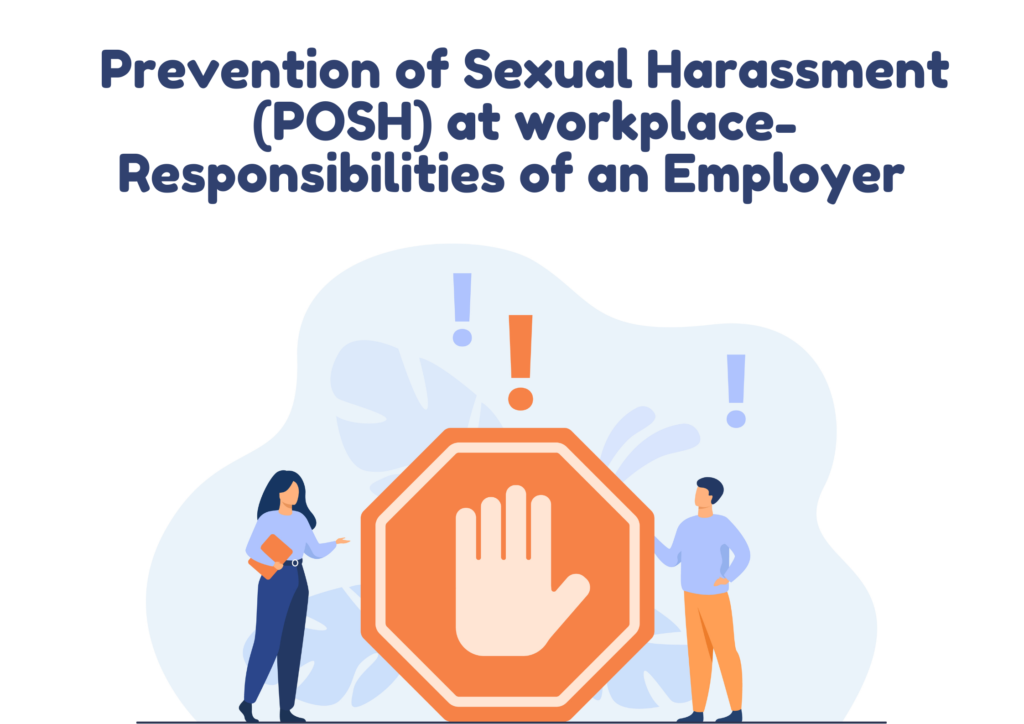Safe workplaces are necessary for employees to perform to the best of their potential. The Vishakha group’s efforts in 2013 were a small step in that direction. Today, organizations are continually striving towards safer workplaces and more effective systems for grievance redressal regarding workplace sexual harassment. This has all been due to the implementation of the Prevention of Sexual Harassment act of 2013. Workplaces now have mandatory POSH training sessions to ensure that workplaces are safe and harassment-free zones for all employees. Ever since the #MeToo movement, the need for this activity is important now more than ever. Noncompliance with the POSH act by an organization of this act will result in the employers having to bear penalties.
The following are duties that managers and employees have to follow in every organization to ensure that they comply with the POSH act.
Implementing an Organizational Anti-Sexual Harassment Policy Organizations and their management must ensure that a strong anti-sexual harassment policy tailored to meet the highest standards, specific to an organization’s environment, is in place. This can be done by reaching out to a lawyer experienced in labor disputes and gender issues to create a watertight policy with no room for errors.
Creating Awareness
Merely implementing stringent sexual harassment policies will not suffice. Managers have to take the extra step to communication protocols and procedures regarding harassment and safer workplaces to all the employees at all levels within the organization. By holding regular training programs which can also be outsourced to HR services, the idea of safer, harassment-free workspaces can be communicated effectively. The consequences of not non-compliance must also be clearly communicated to employees, including wage deduction or termination. This information could also be visible in notices or posters that could be displayed in public areas like the reception area, canteen break rooms, etc. Regular sensitization training and awareness programs can also be conducted to educate employees on appropriate behavior.
Forming a Complaints Committee:
Workplaces must have an internal complaints committee. It must be in place even if there are no women in an organization. If a woman has claimed that she has been harassed, she may approach the ICC. Companies with less than 10 employees do not need an ICC, and complaints must be made to the Local Complaints Committee (LCC), overseen by a district magistrate or district collector.
Assisting Employees and Reporting
An employer is obliged to assist their employees if they accuse other employees of harassment. This also implies that employers must actively aid the employee in taking legal action, including, if necessary, criminal action. The employer may also initiate a complaint against the accused if necessary. Once a complaint is in place and the mechanism is underway, employers must report the incident. This involves submitting reports regarding the incident and status quo and ensuring that both parties, the plaintiff and accuser, have submitted incidents of sexual harassment cases in the company. This annual report must be submitted to the Registrar of Companies. Societies and trusts need to file this report with the Charity Commissioner or Registrar of Societies. Sole proprietorships, partnership firms, and LLPs do not need to file this annual report. Instead, they need to inform the District Officer appointed under the POSH Act about the sexual harassment cases within the organization and their status.
(Read More: POSH Compliance – Creating Safer Workspaces)
Looking for solutions regarding POSH compliance and other HR services for your organization? Get in touch with TalentPro today.









